The Netherlands
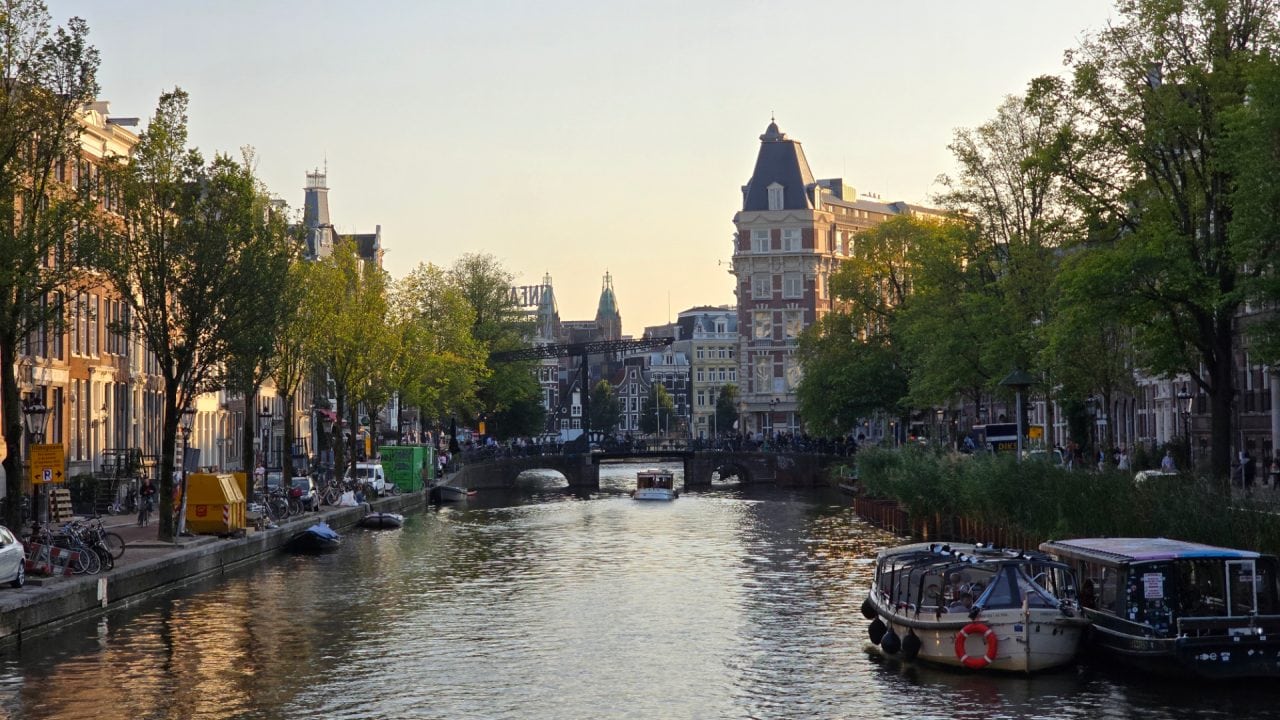
Well, we did it! Even though we left the Netherlands in a mad rush (more on that below), we managed to cycle to the delta where the Rhine and Meuse rivers meet the North Sea. We biked through Rotterdam, the Hook of Holland, The Hague, and Amsterdam. It was a lot more cycling than we usually do—partly because we were a little short on time and partly because nowhere makes cycling easier than the Netherlands.
Bike paths are everywhere. In addition to being almost completely flat they’re often totally separate from the cars. Intersections in towns have traffic lights for pedestrians, cars, and bicycles. Bikes often have the right of way over cars, especially on roundabouts, which is fantastic! The bike infrastructure is so well-designed, with some paths wide enough for a dotted line down the center, which turns solid on blind curves—just like for cars.
We even found paved bike paths near the North Sea, cutting through scrubby brush, sparse grass, no trees, and sand dunes. Mike took one look and immediately dubbed it “the Badlands.” In stark contrast to that, we cycled through field after field after field of greenhouses across the countryside.
Another thing we noticed was the number of seniors riding around on mobility scooters or electric wheelchairs. The great network of paved bike paths probably makes it easier for them, too. Interestingly, gas-powered scooters (the ones that look like bikes) are allowed on many bike paths, although not all.
The Mosel in Germany is still my favorite place to bike as a tourist, but if you lived here and wanted to cycle every day, the Netherlands is the place to be.
Here’s an interesting fact: although the Netherlands has fewer than 18 million people, including babies, there are 22 million bikes! I looked it up and asked a few people on the train why that is. Apparently, people often keep an old “beater bike” at the train or bus station, or even at the office, so they don’t have to lug their bike everywhere. Plus, bike theft is fairly common in cities, so the old bike is for the commute from the station to work.
I was surprised that while the bike parking lots at train stations were packed, there weren’t many bikes on the trains themselves. I was even more surprised when I found out the Netherlands is the most expensive country we have seen for bringing a bike on the train! Mike and I often hop on the train for about 20-30 km and then meander back with a nice 40 km bike ride, but the train costs us €15 ($22.50 CAD) just for the bikes! In many countries, bikes are free, or the fee is a fraction of that. Smaller folded bikes can travel for free in the Netherlands. Mike folded ours a few times, but I think they are really too big and they are very awkward to move once they are folded.
For some reason, I expected the Netherlands to be relatively inexpensive. I was wrong! Prices here are quite high, as Mike’s cousin confirmed. Not quite as expensive as Switzerland or Luxembourg, but definitely more than I anticipated.
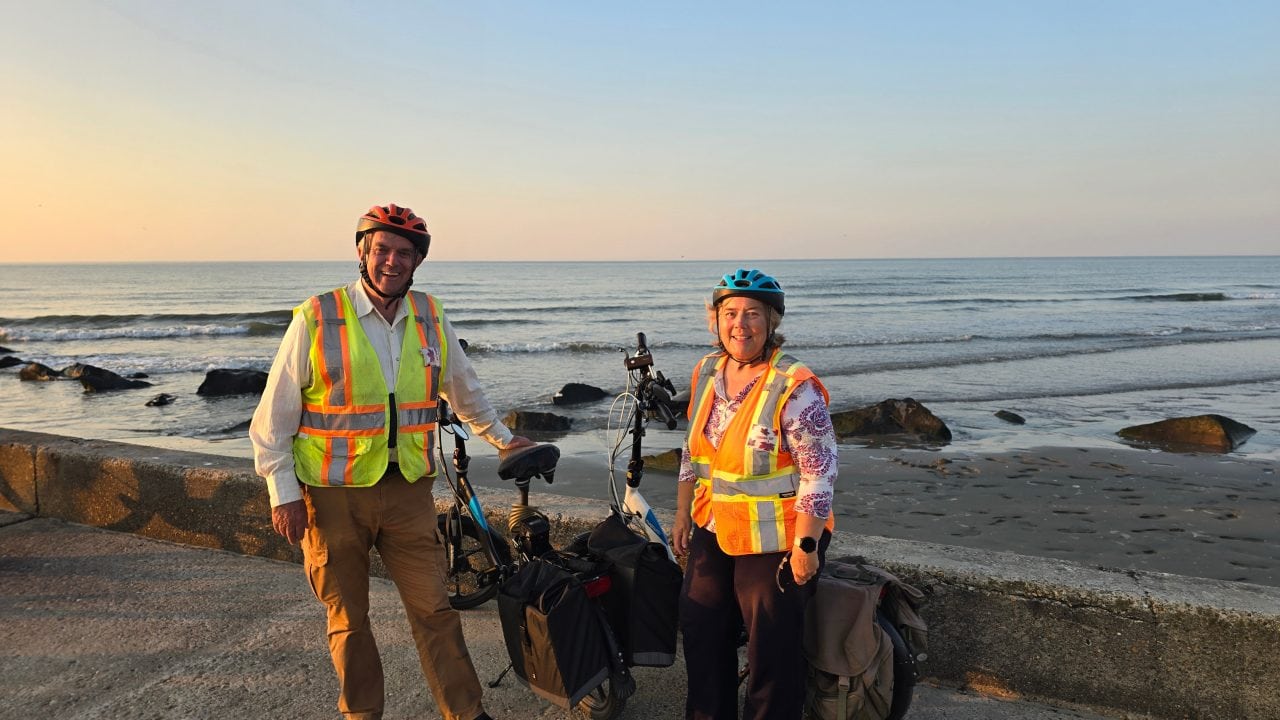
26% of the Netherlands is below sea level. The lowest point is about 6.76 meters (22.2 feet) below sea level. It’s no wonder the country is known worldwide for its water management and impressive flood protection systems.
One town we cycled through was Nijmegen. During World War II, in an error of judgment, the Americans accidentally bombed the town, killing almost 800 people and injuring thousands more. A lot of the lovely historic buildings were destroyed. What made it even sadder was that a Montessori school was hit, killing all 24 children and eight nuns.
While the bombing of Rotterdam in May 1940 is often seen as a symbol of the airstrikes during the war, Nijmegen actually had more civilian casualties. And as we learned, many other bombings during the war are lesser-known such as the Hague, Venlo and more. The air war was brutal, and civilians really paid a heavy price.
We visited a lot of these towns. On a more uplifting note, when we were riding through the center of Venlo, we came across an orchestra performing in front of an impressive city hall. Their stage was covered in plexiglass, probably to protect them from the inevitable rain (which seems to happen a lot), but we could still see the city hall behind them. We sat down, had a cappuccino, and enjoyed the music for about 10 minutes—until Mike couldn’t sit still any longer!
Overall, while the Netherlands and its people are lovely, as a tourist I found myself missing more of the grand cathedrals and medieval city centers. The Netherlands feels more focused on living well in the present rather than showcasing its historic sites.
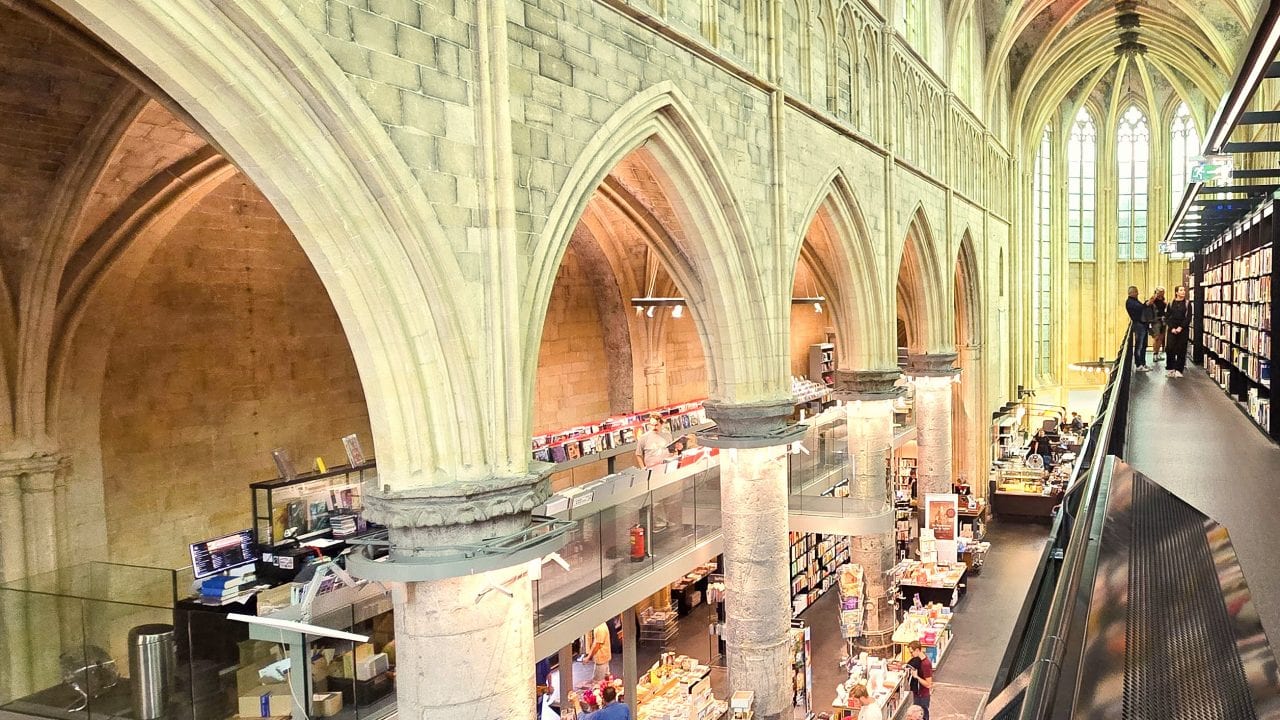
This isn’t to say the Netherlands doesn’t have lovely historic buildings. Here’s a bookstore located in what was originally a Dominican Church. I thought it was pretty great!
Not all churches have been converted, though. This is a 15th-century wooden statue of Our Lady, Star of the Sea, which we saw in the Basilica of Our Lady. It’s absolutely beautiful. So many churches are like art galleries. Twice a year, this statue is carried through town in the city’s religious processions.
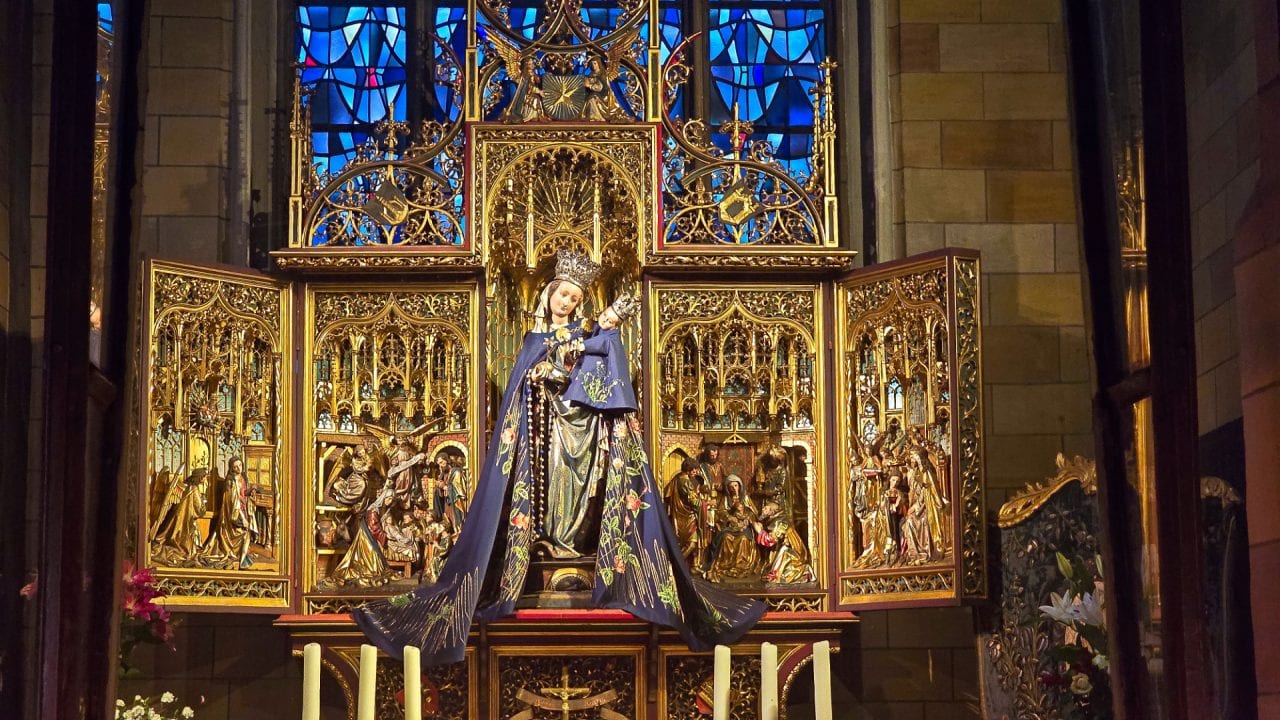
Another town we visited a few times on our bikes was Rotterdam. In 1940, the Germans destroyed the medieval center of the city. Today, the city has a very interesting mix of unique modern architecture. We had a good laugh when we saw a cyclist holding an umbrella while riding! One bike we saw in Rotterdam even had a low backrest for the cyclist. With my sore back, that looked pretty good!
We also cycled to The Hague (or Den Haag, as it’s known locally). We took a hop-on, hop-off tourist tram that wasn’t worth it. Unlike other trams we’ve taken in different cities, this one couldn’t go into the pedestrian-only areas. It would stop at a spot called something like “Cathedral stop,” but the cathedral would be a five-minute walk away! Since Mike and I usually just ride the tram to get an overview of the city and don’t get off, this meant we didn’t see much at all.
As we rode along the coast, we noticed a lot of oil tankers and cargo ships waiting offshore. At first, I assumed they were just waiting their turn to enter the Port of Rotterdam, but it turns out that many of the ships, like grain and oil tankers, were actually waiting on the stock market. This practice, known as “floating storage” or “contango play,” happens when traders or shipping companies think they can make a profit by delaying delivery.
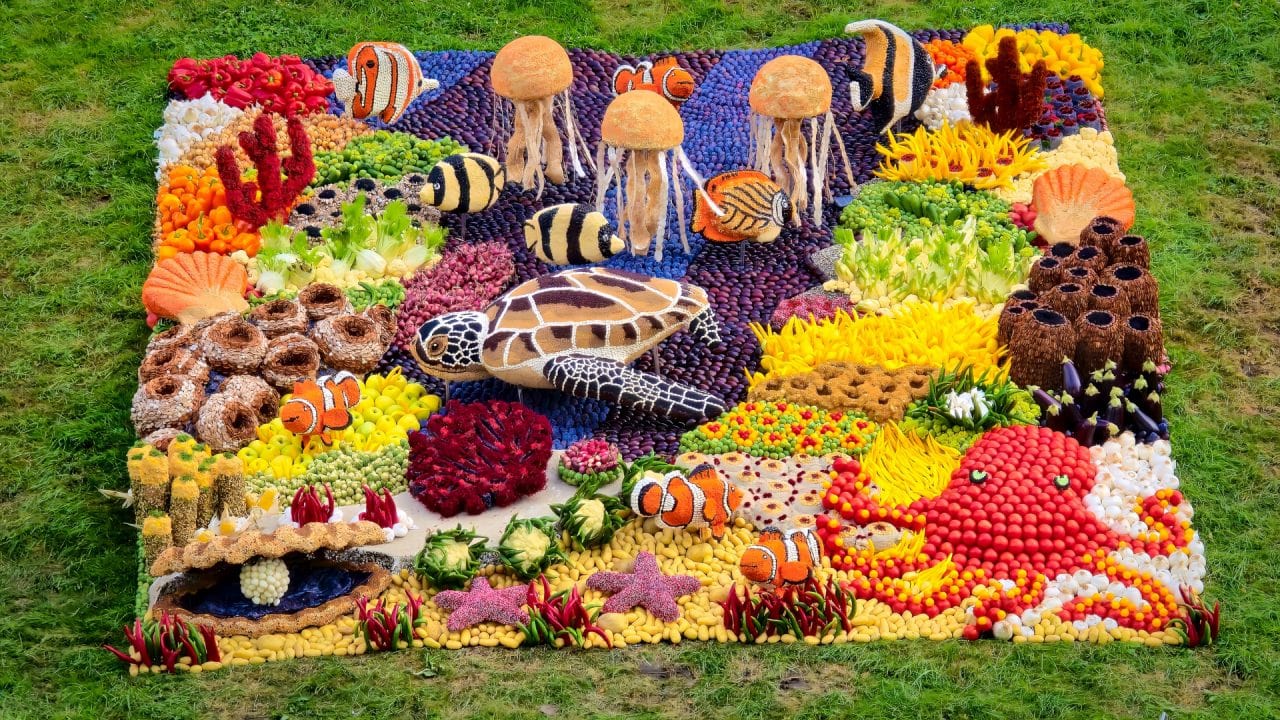
One day, while cycling through Tiel, we stumbled upon an “Applepop” festival. There was plenty of music, but what really impressed Mike and me were the displays along the canal, all made from apples and various other fruits and vegetables. The scenes were so creative and varied—it was really something to see!
As you’d expect, the Netherlands are still full of windmills, but these days they’re the modern, sleek kind. One thing we’ve definitely noticed is that English is spoken and understood by more people here than in many other parts of Europe. Mike, ever the road quality judge, thinks the roads in the Netherlands are excellent, which he takes as a good sign of the country’s prosperity.
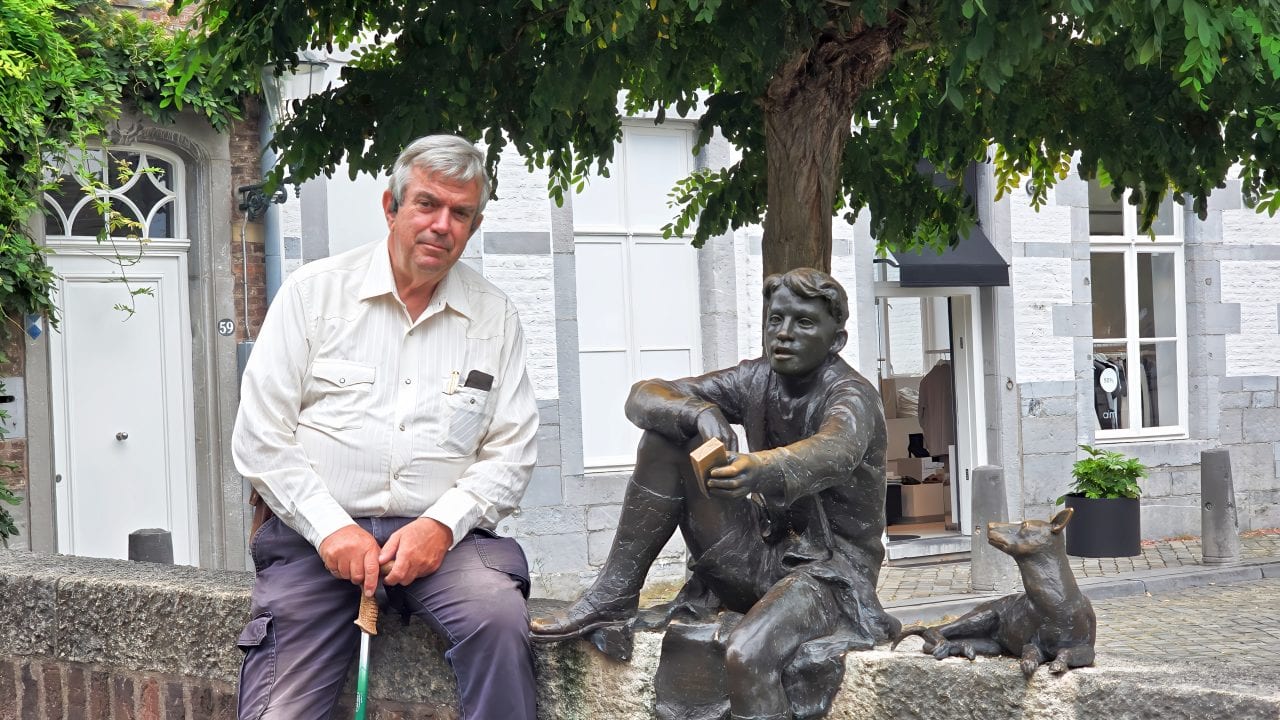
Mike and I had heard of Maastricht before we visited, but only because we’re fans of André Rieu’s concerts. He’s from Maastricht, and as it turns out, his name comes up a lot when you look at the city’s highlights. We’ve been trying to catch one of his shows as we travel across Europe, but our dates have never lined up. The closest we got was a movie theatre show back in Canada in 2019! Even here in Maastricht, André Rieu was performing in July and December—of course, we were here in August and September!
In this picture, Mike is standing with Pieke, a young boy from a local novel who’s sitting on a wall with his dog, selling cigarettes to passers-by. Pieke represents a time when Maastricht was struggling with poverty, and his story is rooted in the history of this very street.
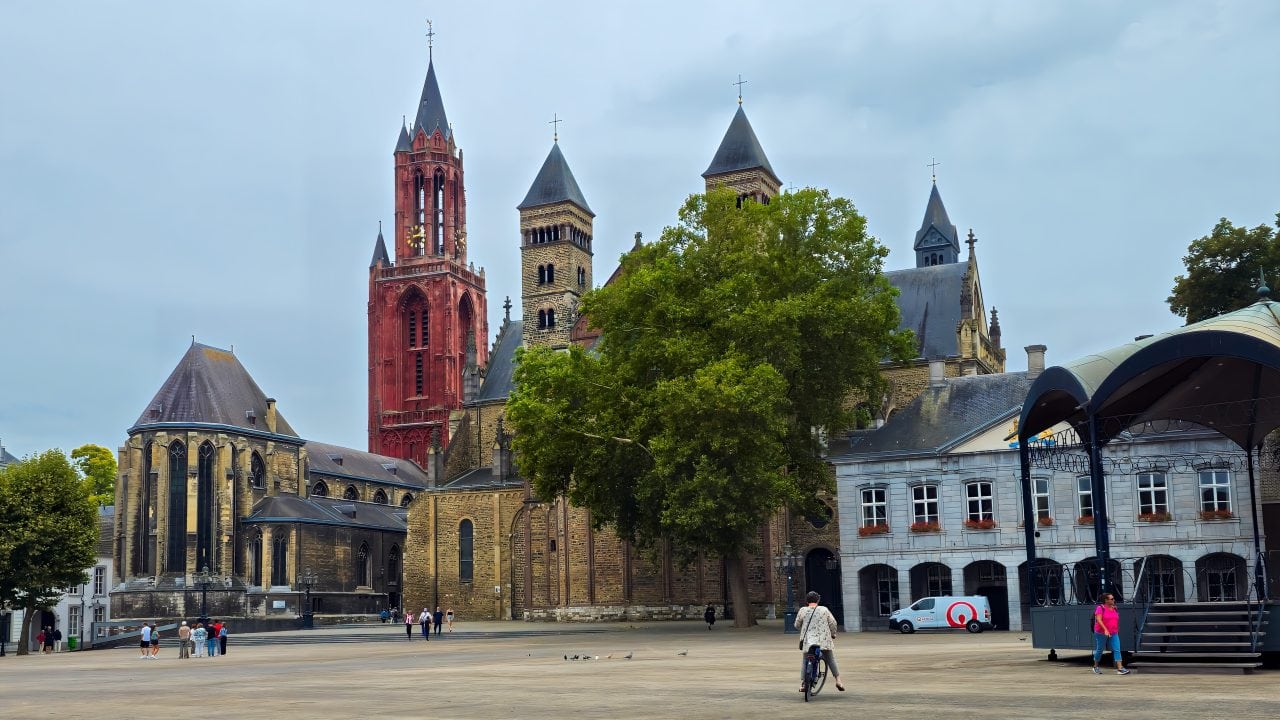
It’s amazing how often we come across two churches right next to each other. If I hadn’t been there when Mike took this picture in Maastricht, I would’ve thought it was all one church, with maybe a separate tower! The Gothic church on the left, with the iconic red tower, is actually newer than the basilica on the right.
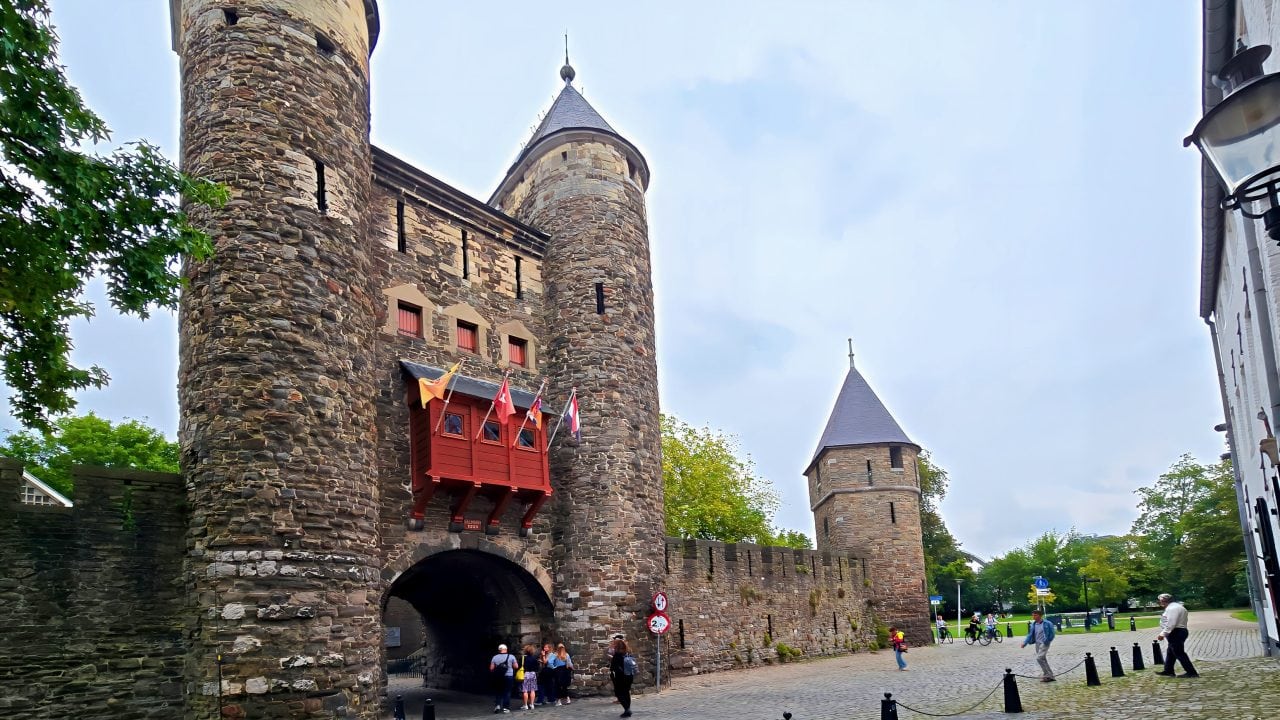
This photo shows Maastricht’s last remaining medieval gate.
One day, we took a break from cycling to drive and visit Mike’s family, who are all from the Netherlands. We spent the day with his cousin, who took us around to visit other family members. About a week later, three of them came to visit us, which was really nice. We hadn’t seen them since we first started our European trip eight years ago!
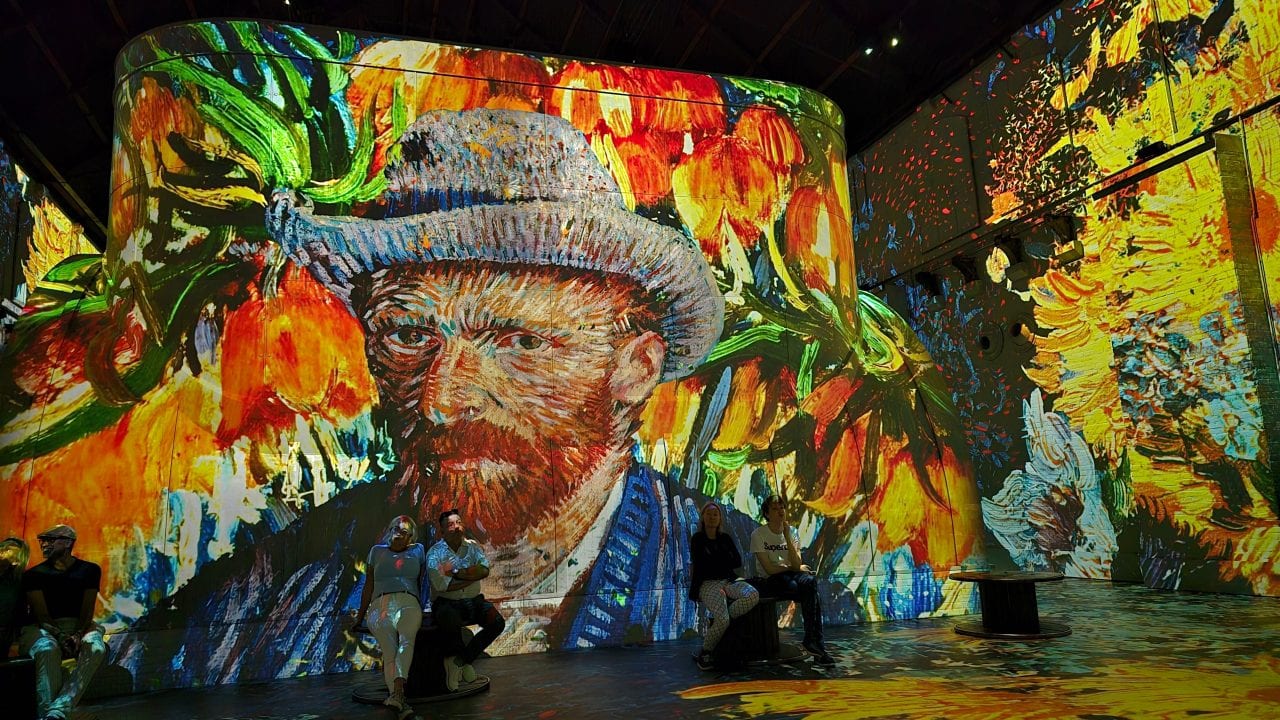
We cycled to Amsterdam and spent an afternoon touring the city. The picture at the top of this post is one of the canals in Amsterdam. Canals are everywhere in this country, and they’re lovely to see. Towns often decorate the bridges or the sides of the canals with flowers, making them even more picturesque.
On our way into Amsterdam, we stopped to see a media light show featuring paintings by Dutch artists. The artwork was projected onto old, textured walls, with the images towering 10 meters (33 feet) high. It was really well done, and I thoroughly enjoyed it. We saw something similar in France two years ago that I also liked. Mike, on the other hand, would’ve preferred a stop at the Maritime Museum. I agreed we could visit it next time, but we ran out of time, so it didn’t happen.
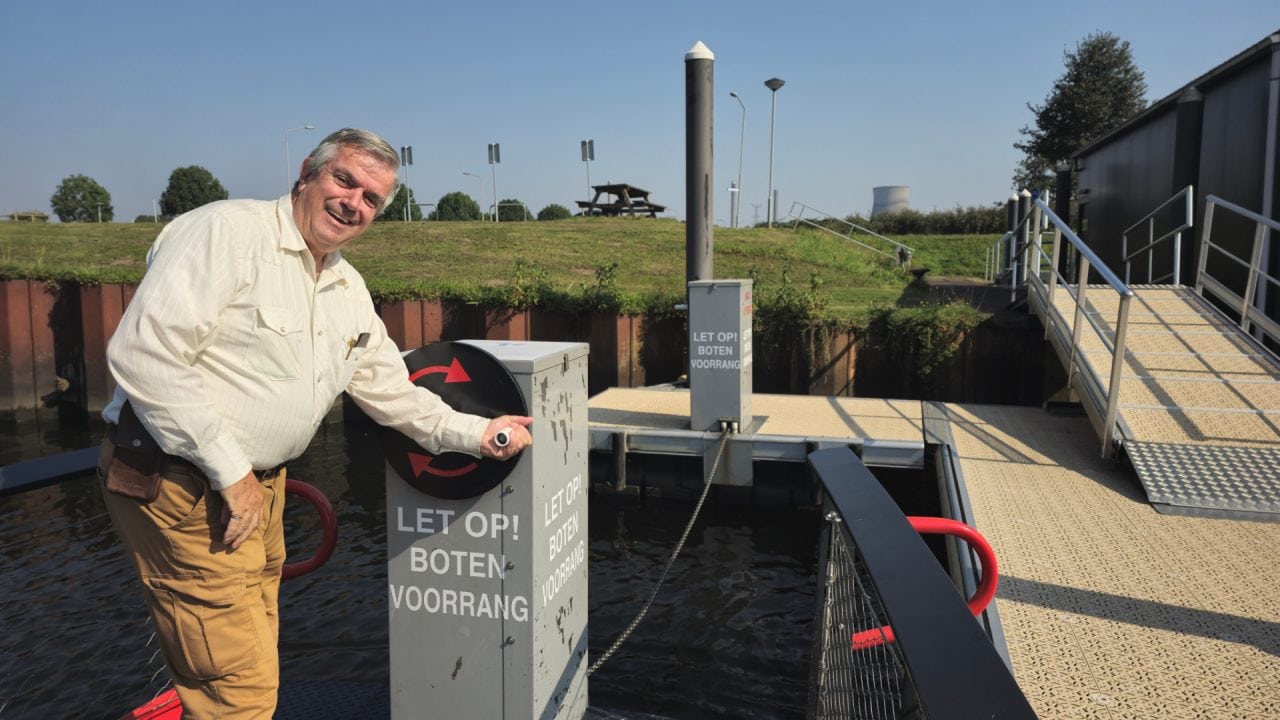
We spent almost a month in the Netherlands, staying at a very large marina in Biesbosch National Park, which was absolutely lovely. Here’s a picture of Mike manually operating a chain ferry to get us across the channel in the marina—something we’d never done before!
We took a boat tour of the national park that had been highly recommended. The tour was advertised as multilingual, and when you bought your ticket, they asked what language you preferred. When we chose English, it turned out we only got a piece of paper with a brief English description of the park, which ended mid-sentence and didn’t cover much of what the tour guide talked about in Dutch. This should not have been advertised it as an English/multilingual tour if they only provide Dutch. And, of course, once I get annoyed about something like this, I tend to stew over it. Every time the tour guide spoke over the loudspeakers in Dutch, I got frustrated again. Definitely not our best tour experience.
I’ll give more details in my next post in a few weeks, but essentially, we’ve decided to wrap up our phenomenal European tour and bring our camper back home before it gets too late in the year to make the drive from the East Coast. We had just two days to pack eight years’ worth of stuff into the motorhome, and there have been a bunch of last-minute issues—like issues with our e-bikes and concerns about the potential strike of 45,000 US dockworkers on October 1. We also found out, to our surprise, that while our Lincoln was fine to ship to Europe from Canada, we can’t ship it back because it’s a hybrid. That was some bad news!
So right now, we’re completely flying by the seat of our pants—even more than usual. I’ll try to keep our status on the home page and map up-to-date. Bye for now!

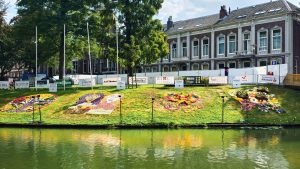
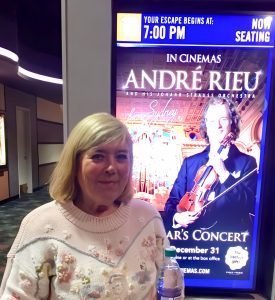
Leave a Reply